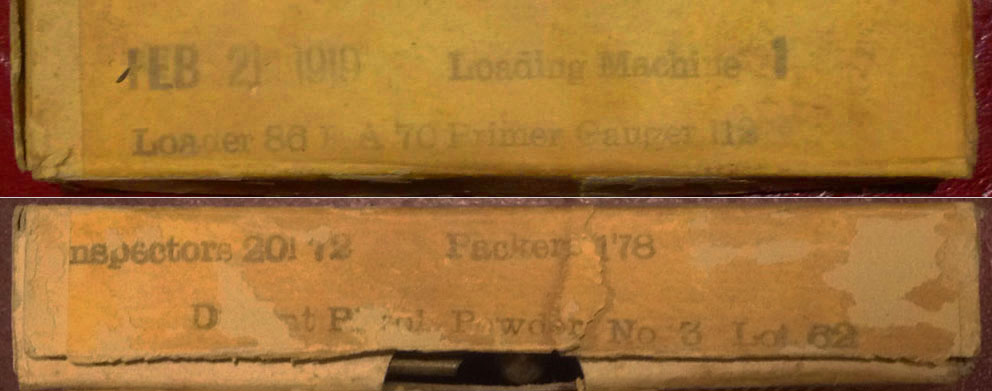|
THE CARTRIDGE COLLECTOR'S EXCHANGE |
|
Home of the Old Ammo Guy's Virtual
Cartridge Trading Table
Picture Page March 2017 Please note: Unless otherwise indicated, the pictures on this web site are my property, and should not be used by anyone without my permission. PLEASE ALSO NOTE: Beginning May 1st, I will temporarily stop taking orders for items from my web site, but will resume taking orders November 1st. During this break I hope to do a little 'dusting and cleaning' with the anticipated goal of updating my web site a bit. I will still continue with my monthly write-ups, and welcome your emails with questions about cartridges you'd like to identify or are wanting to sell, or to just say hello. Thanks for bearing with me. .30-06 Model of 1906 Guard Cartridges....... I bought several boxes of these .30-06 guard cartridges this past December, and while they aren't terribly uncommon, I thought they were interesting enough for this month's page. I don't often encounter these as loose cartridges, so it was a pleasant surprise to be able to find these full boxes.
. .
. . Guard cartridges, as their name suggests, are cartridges intended for short range use on guard or riot duty. As such, they were given a reduced powder charge. They were made using second class (rejected) cartridge cases and bullets. When first introduced as the Caliber .30 Guard Cartridge Model of 1906, the cartridges had blackened cases so as to distinguish them from standard ball cartridges. This blacking had a tendency to wear off with handling, so a more permanent method of identification had to be developed. The first of these, adopted in January of 1908, consisted of five rings or cannelures around the case midway between the shoulder and base. These cases had a tendency to rupture at the grooves when used in machine guns; as a result a redesigned case with six short shoulder flutes for identification was adopted in March of 1910. It was also determined that repetitive chamberings of the guard cartridges resulted in loosening of the bullets. In 1916, the groove in the bullet was deepened, allowing the case mouth to be more securely crimped to the bullet. In spite of these relatively significant changes in the design of the guard cartridge, it retained it's Model of 1906 designation until it was replaced in 1933 by the M1 guard cartridge, which used a round nose lead bullet. .
.
The applied sealing label covers the front, top and back of the box. Stamped on the lower right front of the label in black ink is Ctg Lot 28. Stamped on the upper back and top portions of this label in black ink is the following;
FEB 21 1919 Loading Machine 1 Loader 86 A 70 Primer Gauge 112 Inspector 201 72 Packer 178 Dupont Pistol Powder No 3 Lot 62
.
.
. . . The use of DuPont Pistol Powder No 3 in loading these cartridges is surprising, as the standard load for these was either Bullseye or DuPont Rifle Powder No 1. . Sources: History of Modern U.S. Miitary Small Arms Ammunition, Vol 1, Hackley, Woodin & Scranton. .30-06, Chris Punnet
.
|

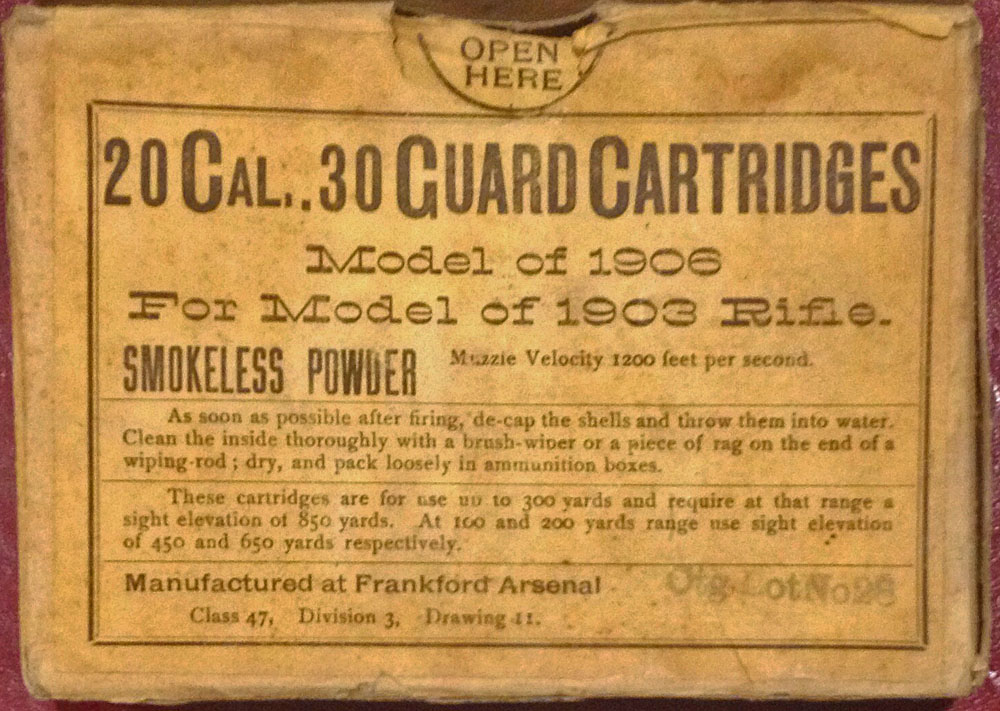
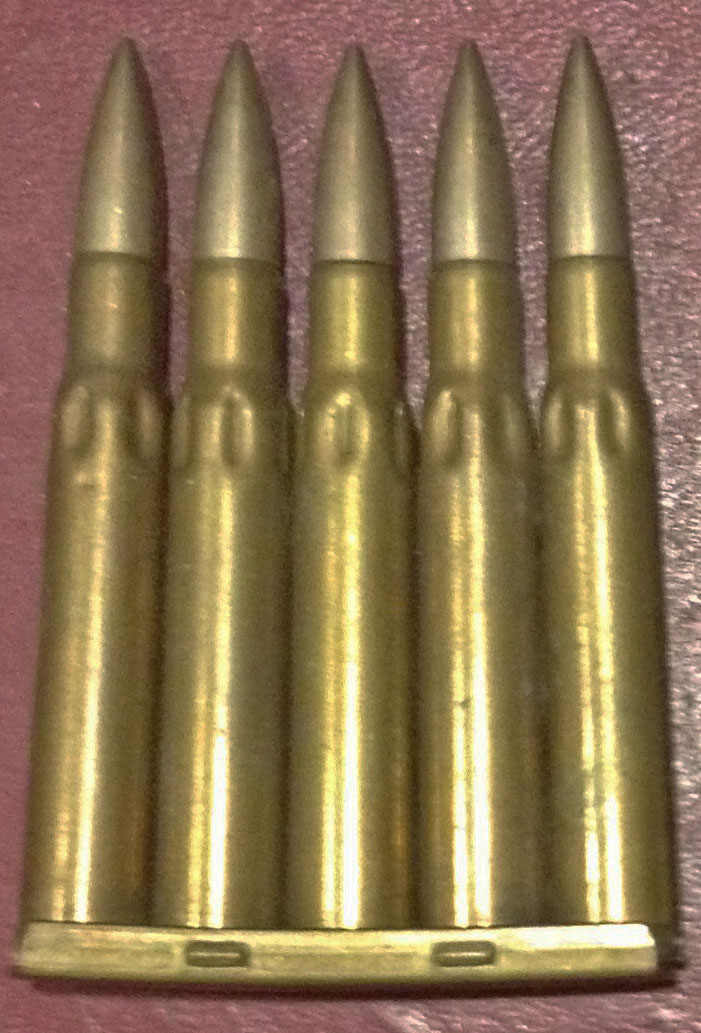
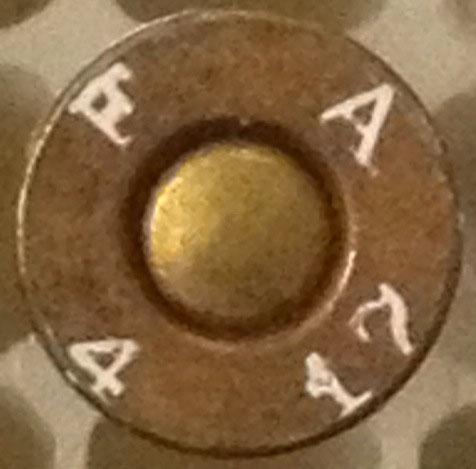
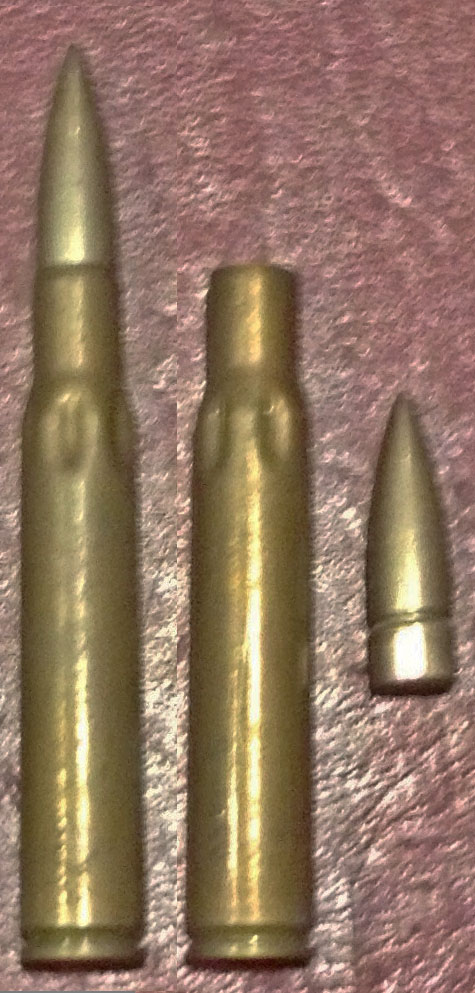 showing
the deep groove is in the picture on the lower right.
showing
the deep groove is in the picture on the lower right.